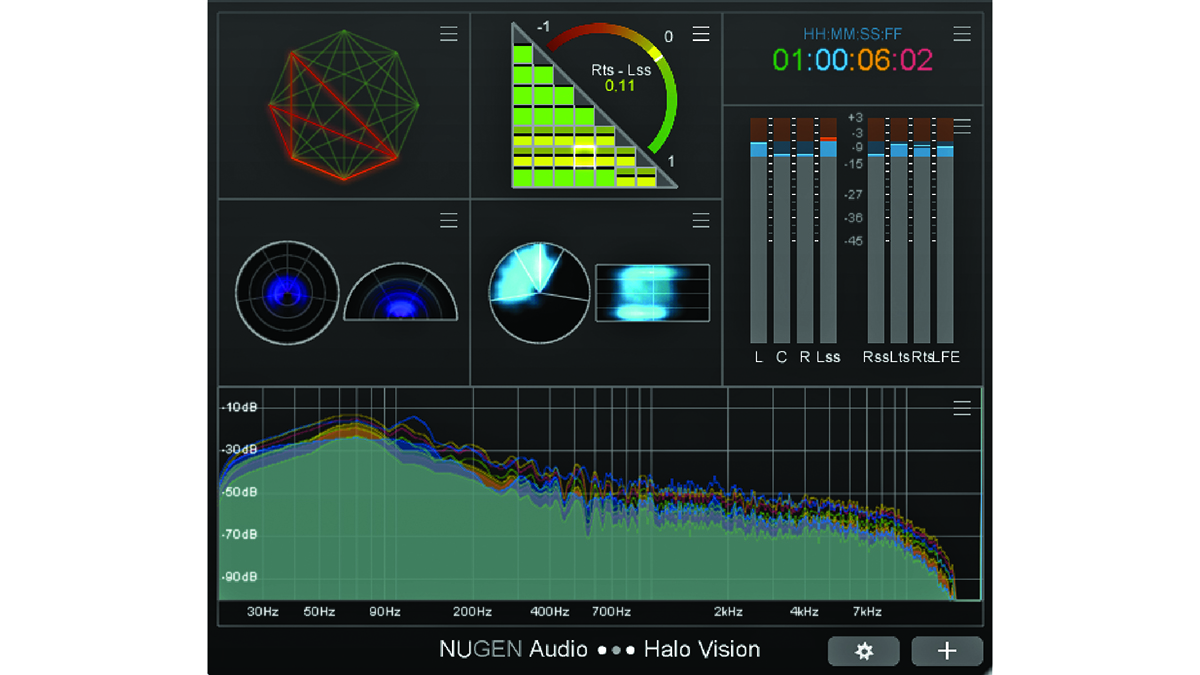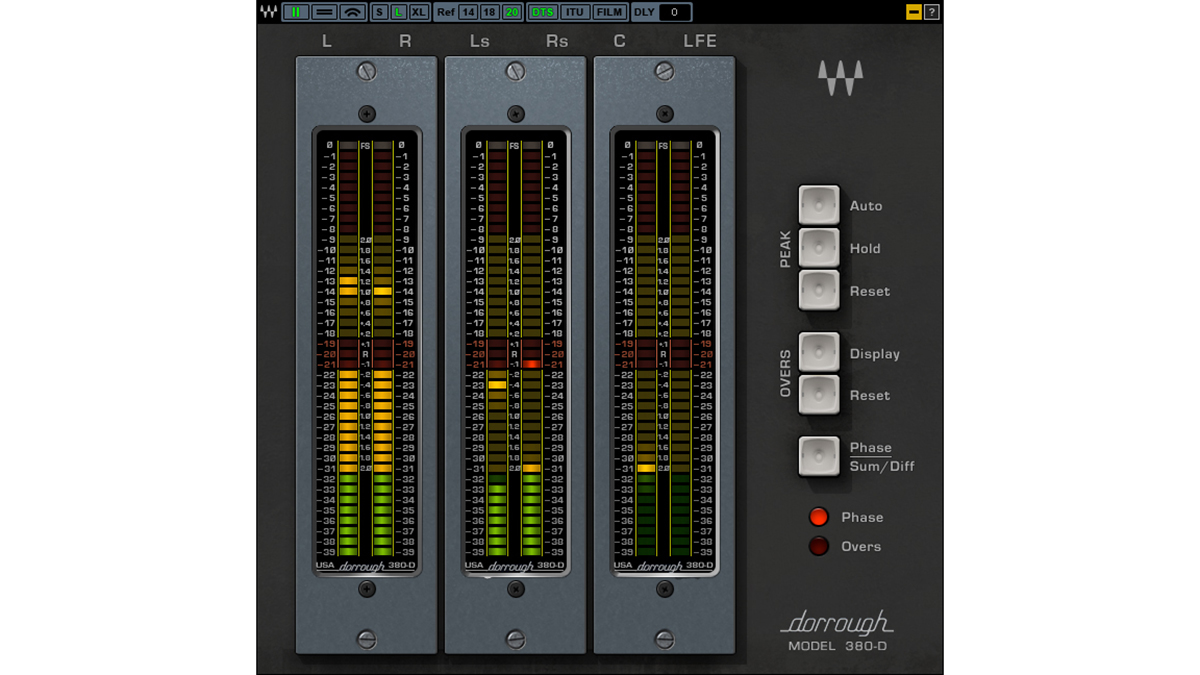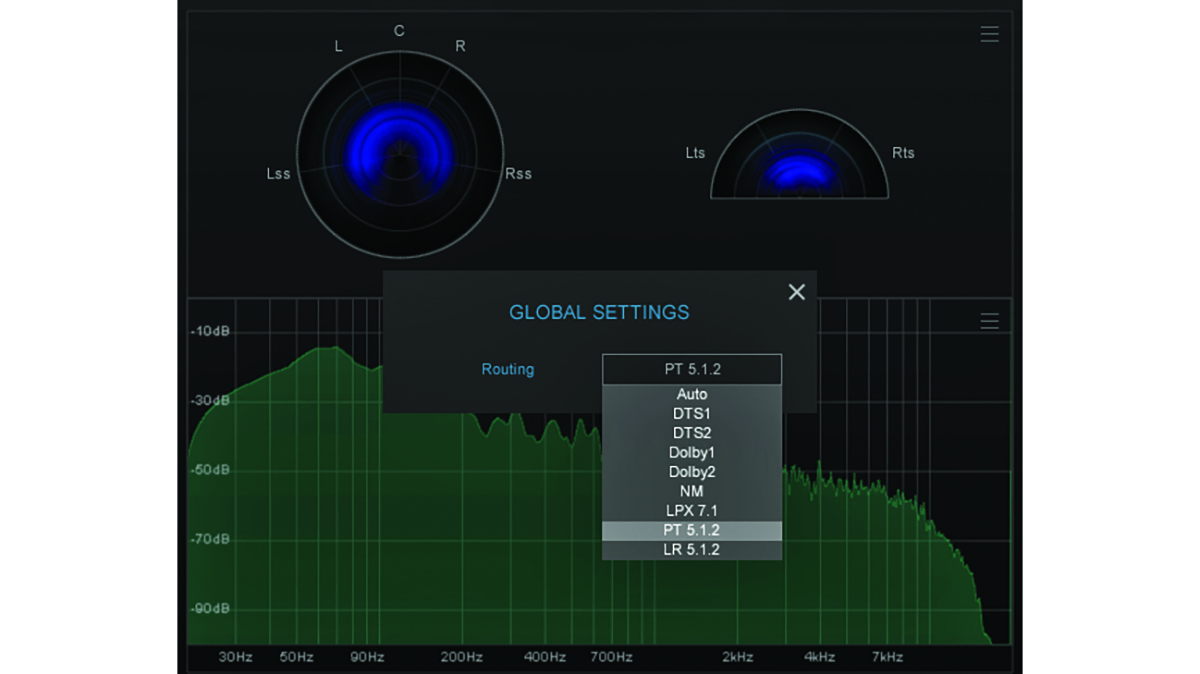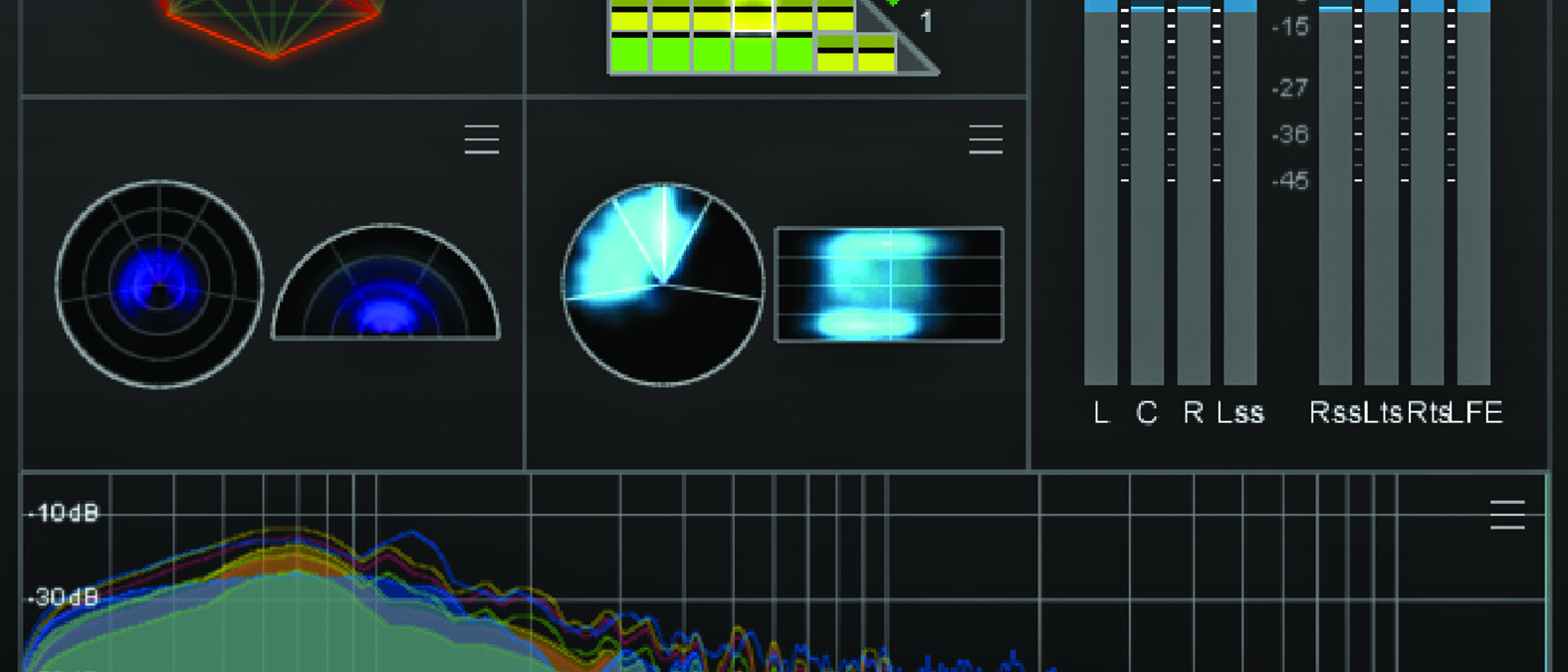MusicRadar Verdict
Halo Vision delivers a great toolkit of meters; perfect for anyone working in multichannel audio and is useful if you’re working with compromised monitoring.
Pros
- +
Configurable workspace with seven modules.
- +
Two specific meters for correlation.
- +
Separate displays for ceiling channels.
Cons
- -
Really only needed if you’re working in multi-channel audio.
MusicRadar's got your back
Nugen Audio Halo Vision: What is it?
Halo Vision (AU, VST3, AAX) is a real-time analysis suite for surround and immersive audio-compatible DAWs and supports up to 7.1.2. Its modular design and customisable interface allow you to open and rescale just the analysers you require, and most modules include user-definable ranges, colours and so on.
On the global front, you access a bunch of presets via the top bar. There is also a selection of DAW-specific multichannel routing presets that can override the automatic option if required. Halo Vision follows the Dolby Atmos recommended naming for surround channels but be aware some DAWs use their own labelling (Logic Pro for example).

Nugen Audio Halo Vision: Performance and verdict
Halo Vision has seven modules. These include multi-channel Peak Meters, group-based Spectrum Analysis (up to five channel groups) and info displays (Time Code), and your DAW may already provide some or all of these options.
However, the real fun starts with the Correlation Matrix, Correlation Web, Frequency Haze and Location Haze. As the name implies the correlation meters provide correlation information and this is for specific pairs of channels. With multichannel audio that’s quite a few combinations to show.

• Waves Dorrough Surround
Multichannel meters that allow you to view sum/difference and phase for user-selectable channel pairs.
• Voxengo SPAN Plus
A flexible channel analyser that can be configured to view frequency curves for multi-channel audio.
The Matrix solution is an XY grid configuration with each channel pair represented by a cell. The colour of this cell then indicates the phase relationship. The colour changes from green (completely in phase) to red (completely out of phase), so you can, at a glance, see where the potential problems lie.
Hover your cursor over a cell and that relationship will also show up on the arc-shaped correlation meter to the right. The Matrix also has an anti-correlation alert with a user-selectable threshold, whereby the cell glows red, and this provides a more eye-catching indicator.
The Matrix is excellent but does take a little time to interpret. This is where the Correlation Web comes in. Arranged as a plan view of all the channels, there are connecting lines between each of them. If the correlation becomes negative the relevant line lights up. The further out of phase the channels become, the more intense the colour is. Clicking on a channel label solos the individual channel’s various relationships.
Want all the hottest music and gear news, reviews, deals, features and more, direct to your inbox? Sign up here.
Out of the Haze
The two Haze meters cover frequency and location. The Frequency Haze shows frequency content across the surround panorama, with the lowest frequencies at the centre and highest on the edge. The main plan view also includes typical speaker locations around the edge. The Location Haze shows energy distribution across the surround panorama with brighter colours indicating higher intensity.
In both cases, if your surround has overhead channels (7.1.2 for example) then these are shown by an additional meter at the bottom. Interpreting the haze meters takes time to master, and we found this particularly true for the Frequency Haze. That said, much like the correlation meters, if the indicators are extreme or panorama distributions unusual it’s immediately apparent, and that of course will draw you in for further inspection.

Why do you need this plugin?
If you’re already working in surround sound or immersive audio then Halo Vision will be an invaluable addition to your toolbox and should help reaffirm the impact of your existing practices. However, we know that the vast majority of our readers will not fall into this category.
Nevertheless, Dolby Atmos is clearly gaining traction, particularly in its binaural format, which Dolby has been focusing on. Factor in its incorporation into leading DAWs, plus the need for people to work on surround formats without approved monitoring or even any surround monitoring for that matter, and quite understandably metering and analysis become considerably more important.
So, if you’re one of the many people who is now preparing Dolby Atmos mixes solely on headphones and you’re relying on the binaural presentation to make decisions, getting a different perspective is no bad thing, and that’s what Halo Vision can help provide.
Verdict
Halo Vision provides an excellent way to visualise various aspects of your surround audio and tackles these complexities very well. If you’re used to using a selection of different meters its single configurable window will also be very welcome.
MusicRadar verdict: Halo Vision delivers a great toolkit of meters; perfect for anyone working in multichannel audio and is useful if you’re working with compromised monitoring.
Nugen Audio Halo Vision: Hands-on demos
NUGEN Audio
Michael G Wagner
MusicMarketingTV
Nugen Audio Halo Vision: Specifications
- Available formats: Supports 64-bit AAX, VST3 and AU. Halo Vision requires a surround-compatible plugin host such as Pro Tools HD.
- Minimum system requirements: Mac OSX 10.9.x / 512 MB RAM. Windows (64-bit) Vista or above / 512 MB RAM.
- CONTACT: Nugen Audio
Computer Music magazine is the world’s best selling publication dedicated solely to making great music with your Mac or PC computer. Each issue it brings its lucky readers the best in cutting-edge tutorials, need-to-know, expert software reviews and even all the tools you actually need to make great music today, courtesy of our legendary CM Plugin Suite.

